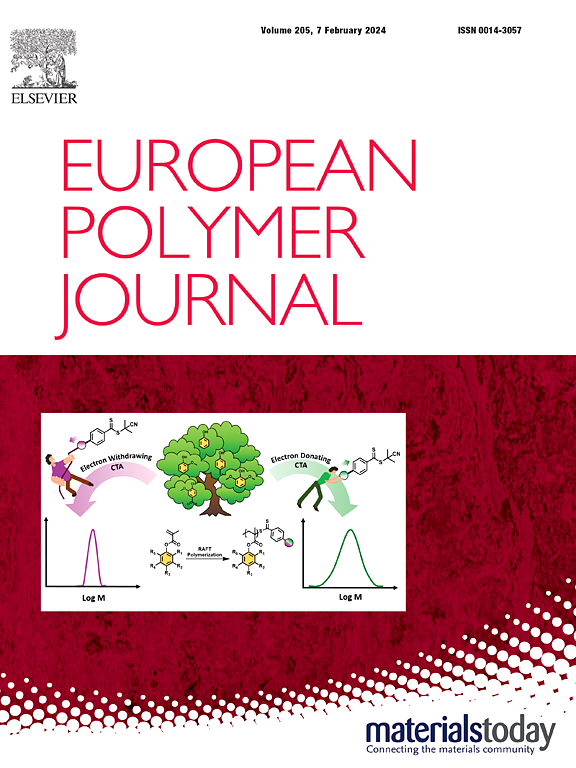Novel Di-Spiroborate Motif-Enabled Desired Bio-Based Epoxy Covalent Adaptable Networks for Robust, Processable, Recyclable, and Degradable Adhesives
IF 5.8
2区 化学
Q1 POLYMER SCIENCE
引用次数: 0
Abstract
Advanced adhesives design needs to meet multiple requirements of cohesion strength, interfacial activity, re-processability, and degradability, while there exist great challenges to integrate these into single crosslinking network. Here, a novel di-spiroborate structure was designed and synthesized, and then applied to prepare epoxidized soybean oil-based covalent adaptable networks (CANs) adhesives. It was found that the double six-membered ring structure enhanced the rigidity of polymer chains for improved cohesion strength. Moreover, the B-O bond not only optimized interfacial activity via the reactions between electron-deficient boron atoms and the donor groups and nucleophiles of substrate, but also endowed epoxy CANs with re-processability and desired degradability owing to its dynamic property. Given on the effects, the maximum shear strength reached 16.24 MPa, showing an 94.96 % increment compared to the control. Meanwhile, the epoxy CANs adhesives still displayed 85.4 % conservation of lap shear strength after 3 bonding and de-bonding tests. Moreover, the epoxy CANs could be degraded in 1 M HCl/H2O solution within 125 min, and the degraded adhesives could rebonding substrate presenting a shear strength of 7.1 MPa. This work provides significant guidance to construct innovative CANs and highlights the development of multi-functional adhesives.

求助全文
约1分钟内获得全文
求助全文
来源期刊

European Polymer Journal
化学-高分子科学
CiteScore
9.90
自引率
10.00%
发文量
691
审稿时长
23 days
期刊介绍:
European Polymer Journal is dedicated to publishing work on fundamental and applied polymer chemistry and macromolecular materials. The journal covers all aspects of polymer synthesis, including polymerization mechanisms and chemical functional transformations, with a focus on novel polymers and the relationships between molecular structure and polymer properties. In addition, we welcome submissions on bio-based or renewable polymers, stimuli-responsive systems and polymer bio-hybrids. European Polymer Journal also publishes research on the biomedical application of polymers, including drug delivery and regenerative medicine. The main scope is covered but not limited to the following core research areas:
Polymer synthesis and functionalization
• Novel synthetic routes for polymerization, functional modification, controlled/living polymerization and precision polymers.
Stimuli-responsive polymers
• Including shape memory and self-healing polymers.
Supramolecular polymers and self-assembly
• Molecular recognition and higher order polymer structures.
Renewable and sustainable polymers
• Bio-based, biodegradable and anti-microbial polymers and polymeric bio-nanocomposites.
Polymers at interfaces and surfaces
• Chemistry and engineering of surfaces with biological relevance, including patterning, antifouling polymers and polymers for membrane applications.
Biomedical applications and nanomedicine
• Polymers for regenerative medicine, drug delivery molecular release and gene therapy
The scope of European Polymer Journal no longer includes Polymer Physics.
文献相关原料
公司名称
产品信息
阿拉丁
4-hydroxyphenylboronic acid
阿拉丁
2-ethyl-4-methylimidazole
阿拉丁
Bisphenol F
阿拉丁
Pentaerythritol
 求助内容:
求助内容: 应助结果提醒方式:
应助结果提醒方式:


